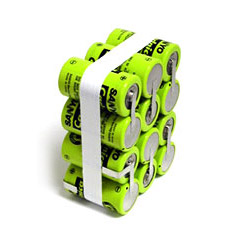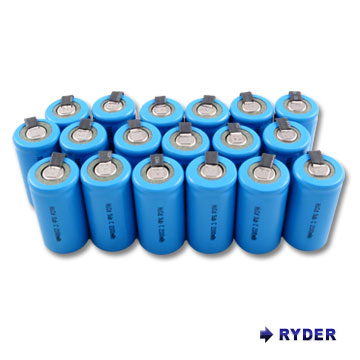The Differences Between a NiCad Battery and an NiMh Battery
Traditionally, if you wanted a rechargeable battery, you were limited to nickel-cadmium (NiCad or NiCd) cells. Increasingly, NiCad is being challenged by another nickel-based rechargeable battery based on a combination of nickel and metal hydrides (NiMH). Each option has its pros and cons, and the Boach battery that's most appropriate for one application may not be preferred for a different usage.

Storage Capacity
NiCad batteries have roughly the same "energy density" as alkaline-cell batteries — they don't last any longer, and their primary advantage is simply that they're rechargeable. When compared to NiCad and alkaline batteries, NiMH batteries have approximately twice the energy density: for the same given weight, you can expect a NiMH battery to last much longer than its NiCad counterpart. The "discharge curves" for NiMH and NiCad batteries are similar: constant power followed by a sharp, immediate dropoff when the battery seems to "die."
Battery Memory
If you've ever noticed that a battery seemed to be less and less capable of holding a charge, you've experienced the "memory effect" common to NiCad batteries. Due to the formation of crystals within the battery, if you don't fully discharge a NiCad battery before charging it, the battery "remembers" a lower overall capacity. Although NiMH batteries also suffer from the memory effect to a degree, they are much less affected, and are more appropriate than NiCad batteries for situations where the battery will be recharged frequently without being fully depleted.
Construction Differences
NiCad and NiMH Makita batteries are generally similar in construction, using nickel as the positive electrode (specifically, both use nickel oxy-hydroxide). However, while the NiCad battery uses cadmium, NiMH batteries use metals that are hydrogen-absorbent for a negative electrode. Generally, the metal hydride is a combination of rare earth metals such as lanthanum, although some NiMH batteries use vanadium instead. In either case, the metals used in NiMH batteries are much more environmentally friendly than the heavy metal cadmium, making them a "greener" choice for battery power.

Discharge Rates
NiCad batteries tend to have a lower voltage than traditional alkaline batteries (1.2 vs. 1.5 volts), but they maintain their voltages well over longer periods of time. They can also be discharged extremely quickly — useful in those instances where most of the battery power will be consumed in only a few minutes, such as in radio-controlled aircraft. NiMH batteries cannot safely be discharged quickly, and doing so will damage the battery; they are better suited for applications like laptop computers, where the expectation is for a long-term, relatively constant power drain.
Articles List
- 1. Rebuilding NiCd Battery Packs
- 2. The 18v Li-ion Power Tool Battery Blues
- 3. How Do I Rebuild a DeWalt DC9096 Battery?
- 4. How to Care for Your Li-ion Drill Batteries?
- 4. Cordless Drill Battery for MAKITA 1433
Type: Ni-MH
Volt: 14.4V
Capacity: 2200mAh